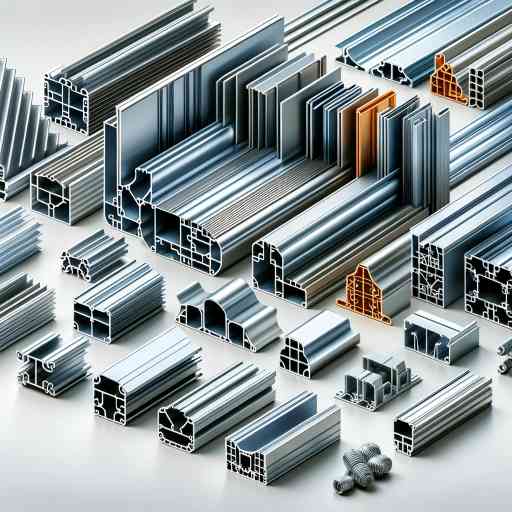1. Composition and Types:Aluminum alloy profiles are made by combining aluminum with other elements like magnesium, silicon, copper, and zinc to enhance their mechanical properties. Common types include:
6061 Alloy: Known for its versatility, good mechanical properties, and weldability. It is widely used in structural applications.
6063 Alloy: Often used for architectural applications due to its excellent finish and corrosion resistance.
7075 Alloy: Known for its high strength and is often used in aerospace applications.

2. Manufacturing Process:The production of aluminum alloy profiles typically involves the following steps:
Extrusion: Aluminum billets are heated and forced through a die to create the desired profile shape. This process allows for the creation of complex cross-sectional profiles.
Heat Treatment: The extruded profiles are heat-treated to enhance their strength and mechanical properties. This may involve processes like quenching, aging, and annealing.
Surface Finishing: Profiles can undergo various surface treatments such as anodizing, powder coating, or painting to improve their appearance and corrosion resistance.
3. Properties:Aluminum alloy profiles possess several advantageous properties, including:
Lightweight: Aluminum is about one-third the weight of steel, making it easier to handle and transport.
Corrosion Resistance: Aluminum naturally forms a protective oxide layer that prevents corrosion, which can be further enhanced through surface treatments.
High Strength-to-Weight Ratio: This makes aluminum alloys suitable for applications where strength is essential without adding much weight.
Thermal and Electrical Conductivity: Aluminum conducts heat and electricity efficiently, making it useful in electrical and thermal applications.
Recyclability: Aluminum can be recycled without losing its properties, making it an environmentally friendly material.
4. Applications:Due to their versatile properties, aluminum alloy profiles are used in various industries:
Construction: Window frames, doors, curtain walls, railings, and structural components.
Transportation: Aircraft, automotive parts, bicycle frames, and marine vessels.
Electronics: Heat sinks, enclosures, and frames for electronic devices.
Consumer Goods: Furniture, sports equipment, and kitchen utensils.
Industrial Equipment: Machinery frames, conveyor systems, and scaffolding.
5. Design Considerations:When designing with aluminum alloy profiles, engineers and designers must consider factors such as:
Load-Bearing Requirements: Selecting the appropriate alloy and profile shape to handle the expected loads.
Thermal Expansion: Accounting for aluminum's thermal expansion in applications subject to temperature changes.
Joining Techniques: Deciding on the best methods for joining profiles, such as welding, bolting, or using connectors.
Surface Treatment: Choosing the right surface finish to enhance aesthetics and protect against environmental factors.
Understanding these aspects of aluminum alloy profiles helps in selecting the right material and design for specific applications, ensuring optimal performance and longevity.
We chat
